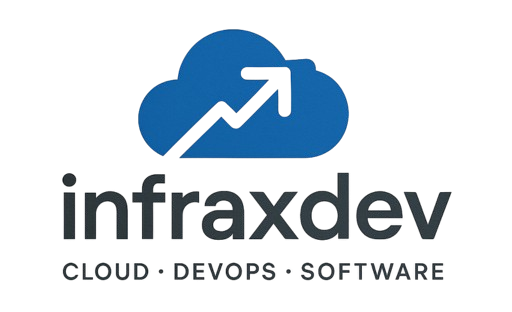
A growing fintech startup partnered with InfraxDev to bring their cloud-native stock analysis platform to life. Their vision was a SaaS tool that delivers real-time market insights and portfolio management in an elegant, user-friendly interface. With detailed Miro flowcharts and high-fidelity Figma mock-ups already in hand, they needed an AWS-specialized full-stack team to handle development, secure deployment, and elastic scalability as they expand data sources and user base.
Client Needs & Context
The primary objective was to validate the stock analysis concept quickly by launching a performant, secure application. The client wanted a polished front end that guides users through registration, data visualization and portfolio tracking without friction. They required enterprise-grade authentication and authorization integrated with AWS identity services. On the back end, they needed a serverless architecture capable of ingesting market data, processing analytics and serving API endpoints with consistently low latency. Above all, the solution had to remain cost-efficient by leveraging pay-as-you-go AWS services and automated infrastructure provisioning, while also accommodating future features like additional data feeds, real-time alerting and advanced charting
Key Challenges
One major challenge was designing a truly serverless system that could handle both streaming and batch market data without over-provisioning servers or creating single points of failure. Ensuring on-demand scaling for spikes in user traffic and data ingestion was critical. Another hurdle involved implementing a seamless, secure authentication flow—covering sign-up, multi-factor verification and token-based route protection—without compromising the user experience. Finally, the platform needed to deliver analytics and portfolio snapshots with millisecond-level response times, even under peak load, necessitating efficient data caching and storage strategies. Maintaining a well-organized, commented codebase for both back end and front end was also essential to allow rapid iteration and smooth onboarding of new engineers.
Our Solutions
For the front end, we chose Vue.js to build a component-driven UI that faithfully replicates the client’s Figma designs. AWS Cognito handles user pools and identity pools, providing robust sign-up, sign-in, password recovery and multi-factor authentication flows. On the back end, all business logic resides in AWS Lambda functions exposed through API Gateway, creating a fully serverless API layer that scales automatically and keeps costs tied to actual usage. To decouple heavy processing tasks, we introduced Amazon SQS queues and scheduled EventBridge rules, ensuring resilient ingestion of market data and reliable execution of analytics jobs. User profiles, portfolio metadata and precomputed analytics are stored in DynamoDB for ultra-fast reads, while static assets and exported chart files live in S3 and are served globally via CloudFront for minimal latency
We managed the entire infrastructure using AWS SAM and GitHub Actions: every merge to the main branch triggers a pipeline that updates Lambda functions, API definitions and Cognito settings. Continuous monitoring and alerting come through CloudWatch dashboards and alarms, tracking error rates, endpoint latencies and DynamoDB throughput. This IaC approach guarantees repeatable, consistent deployments and reduces manual configuration drift.
Technologies & AWS Services
- Compute & API: AWS Lambda, API Gateway
- Identity & Security: AWS Cognito (User and Identity Pools)
- Data Storage: Amazon DynamoDB, Amazon RDS, Amazon S3
- Asynchronous Processing: Amazon SQS, Amazon EventBridge
- Content Delivery: Amazon CloudFront
- Monitoring & DevOps: AWS CloudWatch, AWS SAM, GitHub Actions, Code Pipeline, Code Build, …
- Front-End: Vue.js, Pinia, Vue Router
Outcomes & Benefits
The MVP launched in under eight weeks, meeting performance targets with response times under 100 ms. Serverless components scaled seamlessly, eliminating idle server costs and keeping monthly expenses predictable. Authentication flows achieved enterprise-grade security with multi-factor verification and JWT-based route protection. The modular, decoupled architecture allows the client to integrate new market data sources, add real-time alerting services and enhance charting capabilities without major rewrites. This case study now serves as a template for InfraxDev’s future AWS-powered engagements, clearly demonstrating how we transform fintech ideas into resilient, scalable cloud solutions
